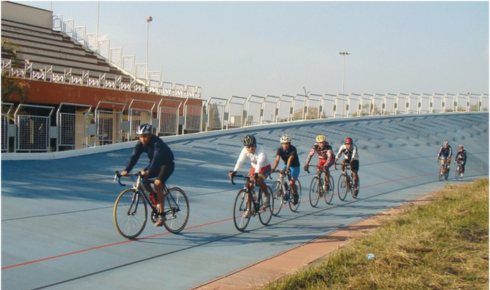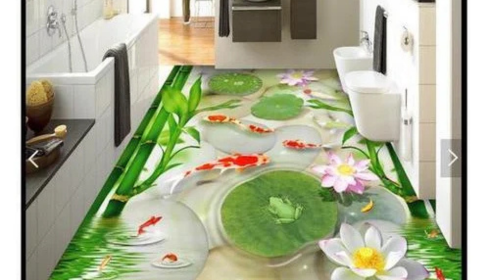India is witnessing a rapid increase in cycling enthusiasts and a strong push towards sustainable urban mobility. As more cities and towns invest in dedicated cycle tracks, one question becomes crucial: what is the best cycle track material to use for safe, durable, and cost-effective surfaces? The choice of cycle track surface material directly influences rider safety, comfort, and the longevity of the track, especially given India’s challenging climate.
In this article, we will dive deep into the various cycle track materials used in India, explore why synthetic surfaces are becoming increasingly popular, and offer practical tips on selecting the ideal material for your cycle track project.
Why Cycle Track Surface Material Matters
The surface of a cycle track is much more than just a layer to ride on—it defines the overall cycling experience. A smooth, well-textured surface can reduce the risk of accidents and fatigue, while a rough or poorly maintained one can deter users and increase maintenance costs. In India, where weather extremes vary from scorching heat to heavy monsoons, choosing the right cycle track surface is especially important.
Some key reasons why the surface material matters:
- Safety: Good traction reduces slipping risks, especially when the track is wet.
- Durability: Materials must withstand UV rays, temperature changes, and water damage.
- Comfort: Shock absorption reduces rider fatigue and joint strain.
- Maintenance: Low-maintenance surfaces save time and money over the long run.
Ignoring these factors can lead to a cycle track that deteriorates quickly, causing inconvenience and higher expenses.
Traditional Cycle Track Materials in India: Pros and Cons
Historically, cycle tracks in India have relied on asphalt and concrete as primary materials due to their availability and cost-effectiveness.
Asphalt is popular because it is flexible, relatively cheap, and provides a smooth surface when freshly laid. However, it has some disadvantages in India’s climate:
- Softens and deforms in extreme heat.
- Prone to cracking with age and heavy use.
- Retains heat, which can make the track uncomfortable for users.
Concrete offers rigidity and strength, resisting deformation even under heavy traffic. But its disadvantages include:
- Hard surface that can be unforgiving in falls.
- Becomes slippery when wet unless treated with special coatings.
- Can develop cracks due to thermal expansion and contraction.
These materials work in many contexts but often fall short when cycling comfort, safety, and long-term durability are prioritized.
The Rise of Synthetic Cycle Track Surface Materials in India
In recent years, synthetic materials—especially acrylic-based coatings—have revolutionized cycle track construction in India. Known as the best cycle track material for modern urban infrastructure, synthetic surfaces combine the advantages of traditional materials while minimizing their drawbacks.
Why synthetic acrylic surfaces are preferred:
- Enhanced Grip and Safety: Synthetic coatings offer excellent skid resistance, even during rains, making the surface safer for cyclists.
- Weather Resistance: These materials resist UV rays, preventing color fading and material degradation over time.
- Shock Absorption: The slight cushioning effect reduces joint impact, allowing more comfortable cycling.
- Low Maintenance: Synthetic surfaces require less frequent repairs and cleaning, reducing upkeep costs.
- Customizable Design: They can be tinted in various colors with clear lane markings for better visibility and aesthetics.
Many urban cycle tracks and park paths in Indian cities now feature synthetic surfaces, reflecting their growing acceptance as the premium choice.
Factors to Consider When Choosing Cycle Track Materials
Choosing the right cycle track material in India depends on several key considerations:
- Usage Volume and Type: High-traffic commuter routes need durable materials like synthetic acrylic, while leisure tracks might tolerate less expensive surfaces.
- Climate Conditions: Coastal areas prone to humidity require water-resistant materials; inland regions need UV-stable and heat-resistant surfaces.
- Budget Constraints: Initial costs may be higher for synthetic materials, but long-term savings in maintenance make them more cost-effective.
- Safety Requirements: Anti-slip and smooth surfaces are crucial for user safety.
- Base Compatibility: The chosen surface must adhere well to the existing base, whether asphalt or concrete.
By carefully evaluating these factors, project managers can make informed decisions that balance cost, safety, and durability.
Installation and Maintenance Best Practices
The longevity of any cycle track largely depends on proper installation and regular maintenance. Even the best cycle track surface material will fail prematurely if not applied correctly or if maintenance is neglected.
Installation tips:
- Prepare a clean, level base with no cracks or debris.
- Ensure proper drainage to avoid water pooling on the track.
- Use primers and bonding agents suited to the synthetic surface.
- Engage professionals experienced with synthetic track installations.
Maintenance guidelines:
- Conduct regular cleaning to remove dirt, leaves, and debris.
- Inspect the surface periodically for cracks or damages.
- Repair minor faults immediately to prevent them from worsening.
- Schedule resurfacing or touch-ups every 8–12 years depending on usage.
Proper installation and maintenance extend the track’s functional life and maximize user safety.
Why Synthetic Cycle Tracks Are the Future of Urban India
Indian cities like Bengaluru, Pune, and Hyderabad are increasingly adopting synthetic acrylic surfaces for cycle tracks due to their excellent performance under local conditions. The government’s push towards sustainable urban mobility and the rising health consciousness among citizens have made cycling infrastructure a priority.
Synthetic tracks offer a compelling combination of durability, safety, and aesthetics, aligning perfectly with the vision of modern, green cities. The flexibility in design also allows for integrating cycle tracks with other urban amenities such as walking paths and parks, creating multi-use recreational spaces.
Conclusion
When planning cycle tracks, choosing the right cycle track material is critical to ensure safety, durability, and user satisfaction. While traditional materials like asphalt and concrete have served well, synthetic acrylic surfaces are quickly becoming the preferred option in India for their superior performance.
Investing in high-quality materials and proper installation will save costs on repairs, enhance rider comfort, and promote cycling as a sustainable mode of transport. For anyone involved in cycle track development, consulting experts specializing in cycle track surface materials in India is the best way to make informed decisions tailored to local needs.



